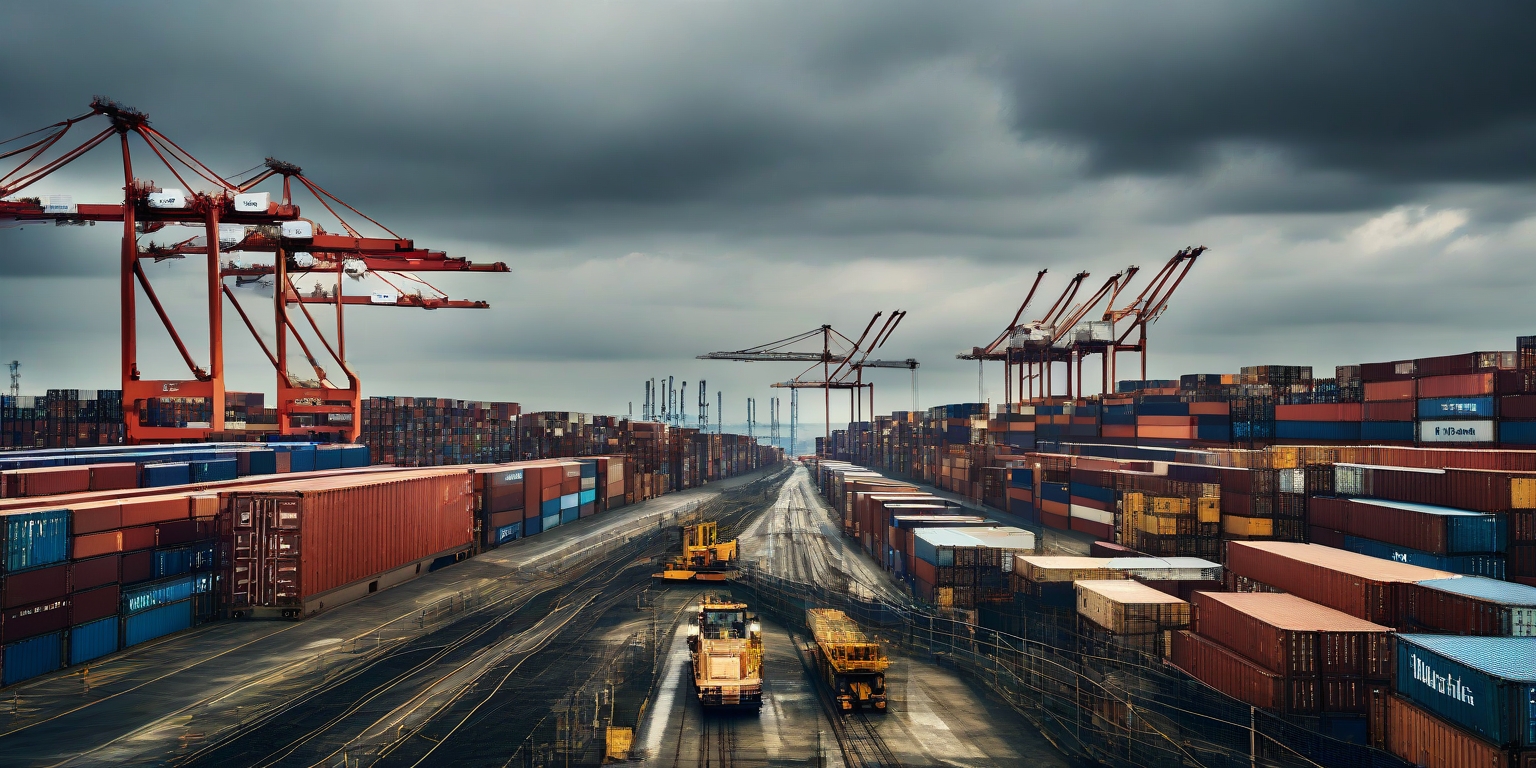Emerging Rail, Port, and Road Infrastructure: Analyzing the Impact and Potential of Strategic Transport Corridors



p {
margin-bottom: 20px;
}
h2, h3 {
margin-top: 30px;
margin-bottom: 10px;
}
Modern infrastructure plays a crucial role in facilitating global trade and driving economic growth. Efficient transport networks, including roadways, railways, ports, and logistics hubs, enable faster, safer, and more cost-effective movement of goods and services across international borders. Improved infrastructure helps reduce transit times, lower logistical costs, and enhance connectivity between producers and markets, thus fostering regional integration and economic development.
Several significant infrastructure projects have emerged as vital corridors supporting global trade. The Middle Corridor, also known as the Trans-Caspian International Transport Route, connects Asia and Europe via the Caspian Sea, offering an alternative transit path that reduces dependence on traditional maritime routes. Similarly, Africa's Lamu Port-South Sudan-Ethiopia Transport (LAPSSET) Corridor aims to boost regional trade by connecting Kenya, Ethiopia, and South Sudan, enhancing economic activity and development in East Africa. Furthermore, the International North–South Transport Corridor (INSTC) provides a multi-modal transport route linking Russia, Iran, India, and Central Asia, offering shorter transit times and lower costs compared to conventional routes. These notable infrastructure initiatives exemplify the strategic importance and transformative potential of global transport corridors in modern trade dynamics.
The Trans-Caspian International Transport Route, commonly known as the Middle Corridor, experienced significant growth in recent years. In 2022 alone, cargo volumes along this route doubled, reaching approximately 1.5 million tons. This sharp increase underscores the corridor's rising importance as an alternative logistical pathway. Simultaneously, the traditional Northern Route witnessed a considerable decline, with cargo volumes contracting by 34%. This shift highlights a strategic realignment of international transport preferences toward the Middle Corridor.
The Middle Corridor offers substantial strategic advantages, notably by reducing reliance on established routes and introducing greater diversification and resilience to international logistics chains. By connecting Europe, Central Asia, and China more effectively, this route enhances trade efficiency and economic integration across these regions. Additionally, geopolitical considerations underscore the corridor's significance: it provides participating nations with increased autonomy in managing their trade routes and reduces potential vulnerabilities from geopolitical tensions in regions served by traditional transport routes.
The LAPSSET Corridor project demonstrates substantial economic promise, with studies indicating Economic Internal Rates of Return (EIRR) ranging from 12.9% to 23.4%. Such robust returns highlight the project's potential to significantly strengthen economic ties and increase regional trade by enhancing infrastructure connectivity among Kenya, Ethiopia, and South Sudan. By creating integrated transport and logistics networks, the corridor aims to reduce logistical costs, promote efficiency, and facilitate smoother cross-border trade, thereby unlocking economic potential across East Africa.
Beyond economic returns, the LAPSSET Corridor is expected to generate considerable socio-economic benefits through employment creation and local economic stimulation. However, the project faces several critical challenges that could affect its sustainability and effectiveness. Among these are potential environmental impacts, given the scale of infrastructure development involved. Additionally, securing adequate and sustainable financing remains a significant hurdle, alongside ensuring transparent governance and coordinated management among the participating nations. Addressing these challenges proactively will be essential to fully realizing the corridor's transformative economic and social potential.
The International North–South Transport Corridor (INSTC) significantly enhances trade efficiency between Eurasia and South Asia. By offering a more direct transportation link, INSTC achieves substantial cost savings, notably reducing costs by approximately "$2,500 per 15 tons of cargo" compared to traditional routes. Additionally, INSTC provides shorter transit times, contributing to increased reliability and predictability for trading partners, thus creating a more efficient logistics environment.
Beyond efficiency, INSTC carries important economic and strategic implications. It fosters stronger geopolitical ties among participating nations, promoting collaboration and enhanced diplomatic relations. Moreover, the corridor creates opportunities for integrating adjacent markets, thereby stimulating regional economic development. Through improved connectivity, countries along the corridor can access new markets, attract foreign direct investment, and spur local industries, fostering broader economic growth and stability.
The Middle Corridor, LAPSSET, and INSTC each offer distinct advantages and challenges impacting their efficiency, cost-effectiveness, and strategic importance. The Middle Corridor, linking Asia and Europe via the Caspian Sea, provides a shorter alternative to traditional routes, significantly reducing transit times and costs. In comparison, the LAPSSET Corridor aims to unlock trade potential across East Africa by connecting Kenya, Ethiopia, and South Sudan, strategically positioning itself to enhance regional integration. INSTC, meanwhile, facilitates economic connectivity between India, Iran, Russia, and Central Asia, serving as a critical route for South-to-North trade flows.
These corridors collectively reshape regional economic dynamics by diversifying trade routes, reducing dependency on traditional maritime pathways, and promoting intra-regional trade. Their development contributes to global trade resilience by establishing alternative logistical networks, thereby enhancing economic competitiveness of the regions involved.
Despite potential benefits, these corridors face significant challenges including infrastructure gaps, lack of regulatory harmonization, and financing constraints. Addressing these requires proactive investment in physical infrastructure, harmonizing customs and regulatory frameworks, and establishing coordinated regional policies. Sustainable financing models, including public-private partnerships and multilateral funding mechanisms, are critical.
Moreover, corridor development must prioritize environmental sustainability. Integrating environmentally responsible practices, such as eco-friendly transportation solutions and renewable energy sources, is crucial for minimizing ecological impacts and ensuring long-term viability of these essential economic arteries.
New infrastructure projects offer significant strategic advantages, including improved connectivity, enhanced trade efficiency, and increased economic integration. Key findings indicate that targeted infrastructure investments can substantially reduce logistical costs, streamline trade routes, and open new markets, directly contributing to broader economic growth. Additionally, these projects foster regional cooperation, reducing geopolitical tensions and promoting stability.
Over the long term, infrastructure advancements hold the potential to reshape global trade patterns by optimizing supply chain routes and enhancing economic resilience. Regions investing strategically in infrastructure may witness sustained economic prosperity and competitiveness in the international marketplace. Moreover, infrastructure development serves as a catalyst for regional stability, facilitating dialogue and cooperation among nations through shared economic interests and mutual benefits. The cumulative effect of these strategic developments positions infrastructure projects as essential contributors to future global economic health and geopolitical equilibrium.

